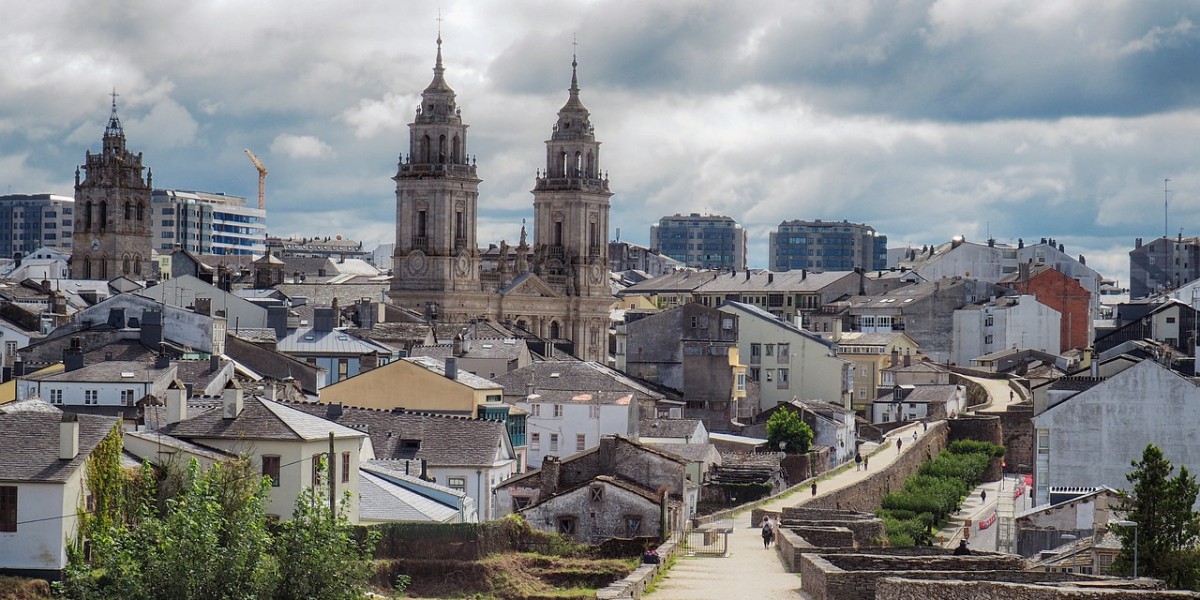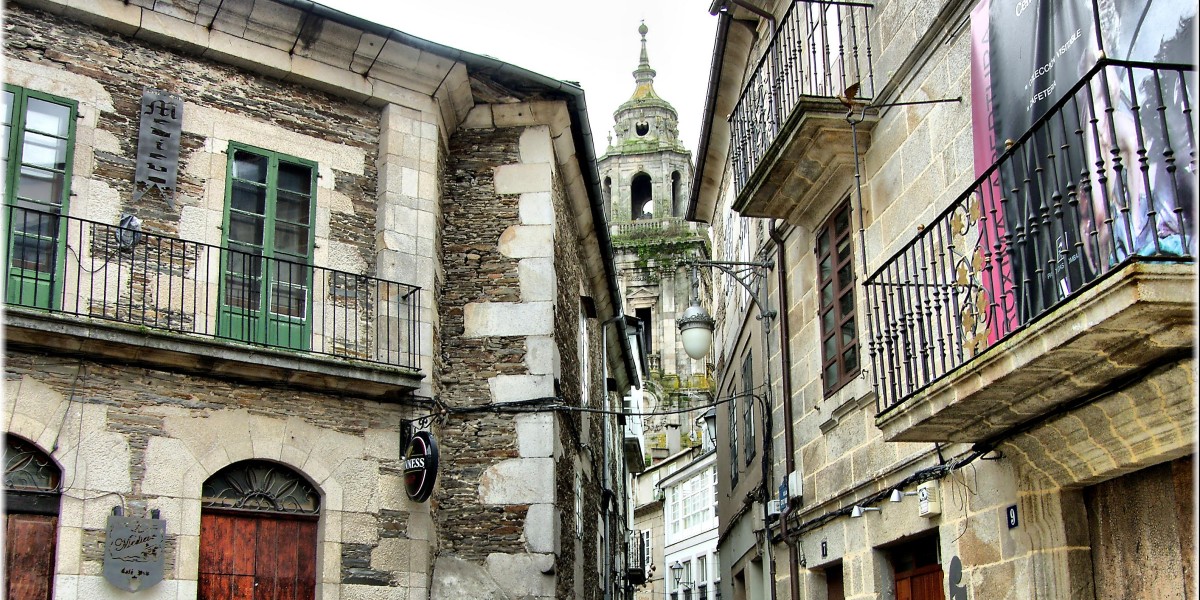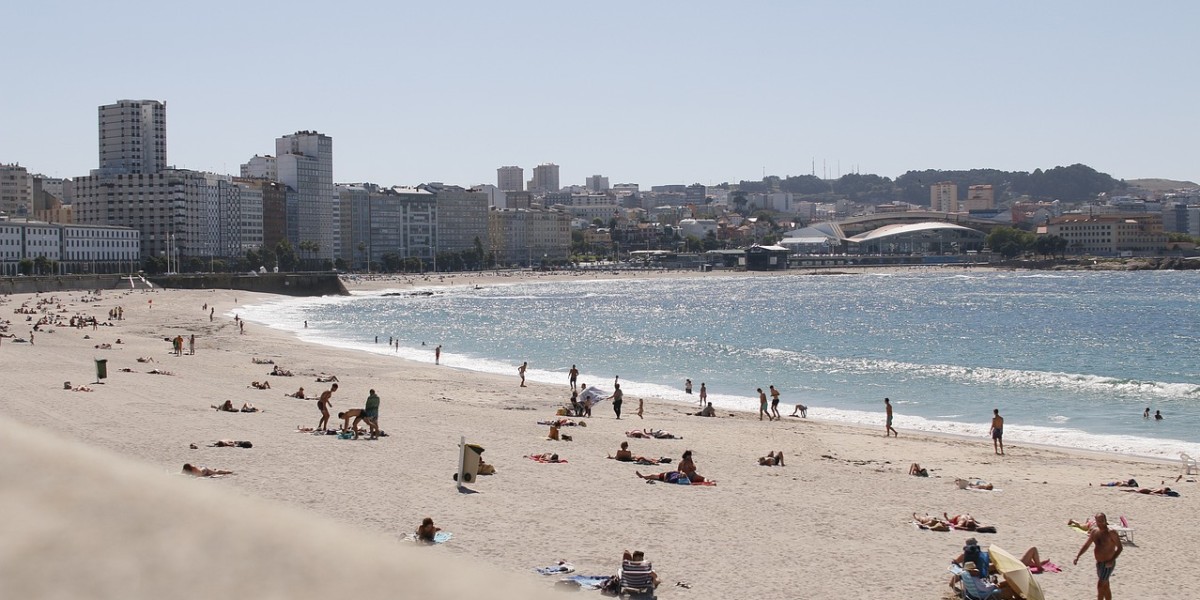
Located in the verdant landscapes of inland northern Spain, just an hour from the sea, Lugo is said to be the oldest town in Galicia. Living in Lugo is a relaxing alternative to the bustling big city environment, defined by its Roman roots and incredible food. With a population of around 100,000, the town's rural charm and serene riverside atmosphere provide a perfect setting for embracing a slower pace of life.
What is Lugo best known for?

Lugo is perhaps best recognised as the only city in the world with completely intact Roman walls. This ancient fortification is a UNESCO World Heritage site and is a standout example of late Roman military architecture. Each year, the city celebrates its Roman heritage through the Arde Lucus Festival, where locals don Roman and Celtic attire, and the city transforms back to its Lucus Augusti roots.
The gastronomy here is another highlight, featuring classic Galician dishes such as caldo gallego, a hearty Galician broth, lacón, slow-cooked pork shoulder, and, of course, pulpo, octopus. You’ll find these traditional dishes in local tabernas as well as in more expensive, high-end restaurants.
Additionally, Lugo is famous for being surrounded by a green belt. It boasts more than ten kilometres of promenade along the Miño River and the Rato River. These are great areas for hiking, leading you straight out into the surrounding countryside. The famous Camino de Santiago pilgrimage also passes through Lugo. You’ll find riverbank restaurants with outdoor seating beside the gushing waters. The town’s Rosalía de Castro Park is another leafy green lung with amazing views of the town and the countryside that envelops it.
Pros and cons of living in Lugo

Considering the pros and cons of living in Galicia, especially in a small inland town like Lugo, can provide clarity if you’re considering relocating to the north of Spain:
This small Roman town certainly comes with advantages:
- Safety: Lugo is renowned for its safe environment, offering peace of mind and the freedom to explore the city day or night.
- Cultural richness: you can enjoy the rich local cultural heritage celebrated through various festivals, museums and historical sites.
- Community atmosphere: the city's relaxed pace encourages a strong sense of community engagement and belonging.
But yes, there are drawbacks to living in Lugo:
- Limited services and employment: compared to larger cities, Lugo may lack in job opportunities and certain amenities.
- Weather: frequent rainfall and high humidity could be less appealing to those unaccustomed to Galicia’s climate.
Cost of living in Lugo

Living in Lugo is relatively affordable when compared to other parts of Spain. A meal for two at a mid-range restaurant costs around €50, and a glass of beer typically costs about €3. Public transportation is budget-friendly, with single tickets costing less than €1.
As of March 2025, home prices in Lugo averaged €1,371 per m2 and €1,065 per m2 in the greater municipality. Renting an 80 m2 apartment in the city would cost on average €640 per month, whereas in the surrounding area, it would be approximately €584. On the western side of the river, in the surrounding countryside of Parroquías Oeste, you'll find cheaper properties, many of which need renovation. Some of the most expensive properties are located within the Roman walls, in the old town.
Living in Lugo vs A Coruña

When considering the best places to live in Galicia, both Lugo and A Coruña have lots to offer. Lugo provides a quieter lifestyle with its historical charm and lower cost of living. In contrast, living in A Coruña, with a population over twice that of Lugo, offers more job opportunities, amenities, and educational institutions.
However, when it comes to property, housing prices in A Coruña are notably higher, with rent averaging €10.6 per m2 and property sales at €2,700 per m2.
The two cities offer contrasting lifestyles to suit different preferences. If you enjoy seaside living, then A Coruña is the ideal choice. Conversely, Lugo is less industrial and has a more tranquil, laid-back atmosphere.
Living in Lugo as a foreigner

Places like Galicia, in general, are becoming increasingly popular with foreigners who wish to avoid the intense heat of southern Spain, opting for the north instead. The quality of life in Galicia is undoubtedly a factor. As a result, Galicia is experiencing a rise in property demand, particularly among luxury homebuyers. Foreigners
Lugo, specifically, is a good choice for outdoor enthusiasts looking for a smaller place to relocate to. However, keep in mind that there are very few foreigners living here, so integrating into the community depends on speaking Spanish and taking the time to understand the local culture.
Although the town is small, the presence of the University of Santiago de Compostela's Lugo campus adds to its lively atmosphere. The Santiago-Rosalía de Castro Airport, located less than an hour and a half away, offers flights to Germany, Belgium, the UK, and other destinations, making it easy to travel within Europe. Plus, while historically rooted in agriculture, Lugo's economy is diversifying into the service, tourism, and education sectors.
